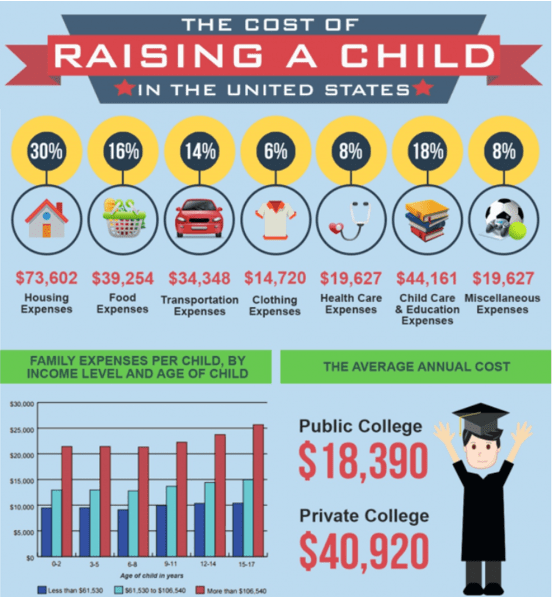Trying to Pay off a Credit Card? What You Need to Know
Tackling credit card debt is a challenge faced by millions of Americans. In fact, according to a recent report from WalletHub, the average credit card debt per household has increased to more than $8,000.
Much of this debt comes from high interest rates, increasing the overall balance of your debt over time. If you’re struggling with credit card debt, there are plenty of efficient ways to make that debt as manageable as possible.
Understanding the relationship between payments and interest rates is the first step—the next comes from employing expert techniques to eliminate credit card debt once and for all.
Balance Transfers (Credit Card Calculator)
If you’re struggling to pay off credit card debt, you may want to consider doing a balance transfer.
What is a balance transfer? It’s simply moving debt from one card to another, as a new card is used to pay off older debt.
The reason why balance transfers are so lucrative is that they typically provide lower interest rates, meaning that you can save money over time.
Many credit cards have promotional periods for balance transfers, offering zero interest for anywhere between 9-15 months. Others may have balance transfer fees ranging between 3-5 percent, so it’s important to check the rates and terms before signing up.
Without a doubt, high interest rates can be a significant challenge for consumers struggling to get out of credit card debt. Transferring an old balance to a new credit card with a lower interest rate is a great way to get some relief from interest and get back on track with payments.
Current Mortgage Rates in Iowa for Good-Excellent Credit Borrowers
Current Mortgage Rates in Oklahoma for Good-Excellent Credit Borrowers
Best Mortgage Rates in Tennessee or Good-Best Credit | 10-15-30-Year Fixed, 5/1, 7/1 ARM
Current Arizona Mortgage Rates | Best Arizona Mortgages & Refinance Rates



Tips for Paying Down Credit Card Debt (Credit Card Calculator)
For some, finding a solution to paying down credit card debt can be overwhelming, especially for those with more than one credit card.
Using a balance transfer is a great solution to manage one debt at a time, but if you have multiple lines of credit you may want to employ a more holistic solution.
There are a few tried-and-true ways of paying down credit card debt that can help you manage your finances and take control of your debt, listed below.
The Snowball Method
The Snowball Method is a great way for debtors to get focused, get organized, and start seeing results as soon as possible. The basic idea is that you choose one credit card to make larger payments on while making the minimum payments on the rest.
After the first credit card is paid off, that payment balance is applied to the next credit card. Continue making larger payments on one—and minimum payments on the rest—until the card is paid off, moving on to the next until all debts are paid.
How do you choose which card to start with? You can sort your credit card debt either by interest rate or by total balance.
For example, if you’re worried about getting hit with extra fees from interest, you may want to start paying down the credit card with the highest interest rates.
You can also choose to sort cards by their highest or lowest balance, and use that as a starting point. Ultimately, how you arrange your debts depends solely on your personal financial situation and your preferences, but the basic process will remain the same.
Pay More than Minimum Payments
Examine your budget and see how much you can afford to overpay on each credit card. Make larger payments on every debt to knock down interest and incrementally chip away at credit card debt.
While paying more than the minimum is always a good idea, it isn’t always the fastest way to eliminate credit card debt. Even though you’ll still be making progress, if your payments are only a few dollars over the minimum, that progress will be slow and steady at best.
Still, paying more than your minimum means that you are actively working towards a lower balance—and lower interest—which are the right goals to have when decreasing credit card debt.
Credit Card Refinancing
If you have multiple lines of credit, you may want to opt for credit card refinancing with a personal loan instead of a balance transfer credit card.
Credit card refinance loans are a good choice for debtors with high combined balances and high interest rates. While a balance transfer credit card will come with debt amount limits, refinance loans will be much less restrictive, making it easy to combine multiple debts into one.
For many debtors, the benefits to using a refinance loan are:
- Multiple debts can be combined into one easy payment
- Payment amounts are fixed, making it easy to manage finances
- Can choose between fixed-rate and variable-rate interest
Not only is it easy to consolidate a wide range of debt into one payment, but depending on the loan terms and your credit score, these loans often provide the best credit card refinance rates.
Current Mortgage Rates in Alabama | Best Alabama Home Loans & Refinance Rates
Current South Carolina Mortgage Rates | Good-Best Credit Mortgage Rates in South Carolina
Current Mortgage Rates in Missouri | Good – Best Credit Missouri Mortgage Rates
AdvisoryHQ (AHQ) Disclaimer: Reasonable efforts have been made by AdvisoryHQ to present accurate information, however all info is presented without warranty. Review AdvisoryHQ’s Terms for details. Also review each firm’s site for the most updated data, rates and info. Note: Firms and products, including the one(s) reviewed above, may be AdvisoryHQ's affiliates. Click to view AdvisoryHQ's advertiser disclosures.



